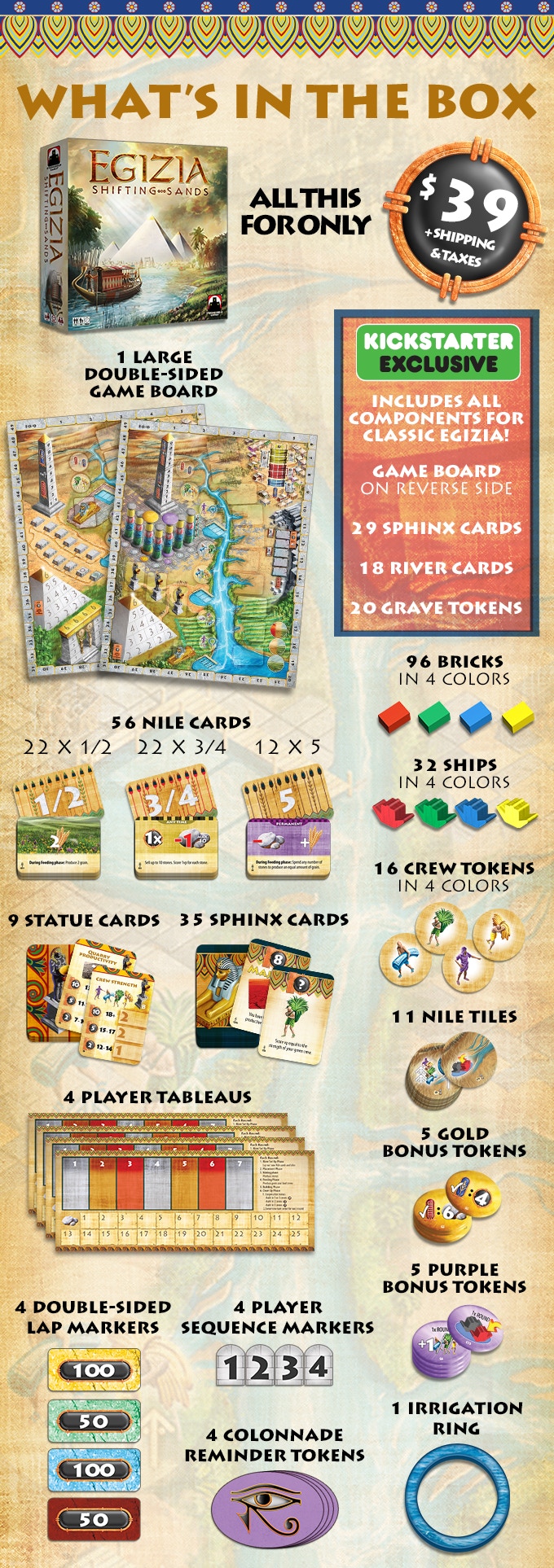Build Monuments For The Glory of Egypt In Egizia: Shifting Sands
May 29, 2019 by cassn
The air waivers in the afternoon heat as the sun beats down on the smooth waters of the Nile. The Pharaoh has sent down an edict to you, his best builders. He requires monuments, not just one, but five glorious monuments in his name so that he will be remembered throughout all of time.
Stronghold Games have announced their modernized version of Egizia; the classic worker placement game where players at as builders in Ancient Egypt trying to impress the Pharoah. Players place boats, collect resources, and build some of Egypt's best-loved monuments in order to become the greatest builder in Egypt!
Now, Stronghold Games seek to bring the glory of the Kingdom of the Nile back to the tabletop in Egizia: Shifting Sands. With new, streamlined rules, modernized art, and two new monuments - the Colonnade and statues - Egizia: Shifting Sands brings the architecture of an ancient world into your board gaming experience!
Egizia was a popular game back in 2009 when it was first released, and after a decade it's proven just as popular, attracting plenty of attention and quickly meeting its funding target on Kickstarter. You can cross the Nile and check out the campaign in more detail here.
Quiz Time: Anubis guards the Scales of the Dead, but what do the scales weigh to determine a human's worth? Answers below!
"Brings the architecture of an ancient world into your board game!"
Supported by (Turn Off)
Supported by (Turn Off)
Supported by (Turn Off)













































































Anubis’ scales weigh a person’s heart against a feather (don’t recall which god the feather is from offhand, want to say Maat, but not convinced that’s right). Iirc it’s not literally supposed to be a person’s heart but rather a representation of either the ba or ka (don’t recall which), which are two parts of the human soul in Egyptian mythology.
Just googled it and the goddess the feather is from is indeed Ma’at. And I wasn’t quite right on the heart/soul bit, the part of the soul represented by the heart is the jb according to Wikipedia and its not quite as symbolic as I thought as apparently the Egyptians didn’t make as clear a distinction between the physical heart and metaphysical heart as modern English does.